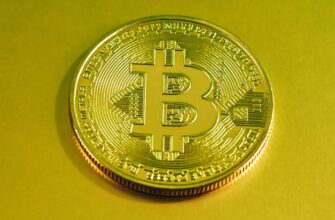What is the Bitcoin Halving?
The Bitcoin halving is a pre-programmed event in Bitcoin’s code that slashes the reward for mining new blocks by 50%. Occurring roughly every four years (or after 210,000 blocks), it’s Bitcoin’s built-in mechanism to control inflation and mimic the scarcity of precious metals like gold. With only 21 million Bitcoins ever to exist, halvings gradually reduce new supply until the last coin is mined around 2140. This event isn’t just technical—it’s a cornerstone of Bitcoin’s deflationary economics that reshapes market dynamics.
Why Does the Bitcoin Halving Matter?
The halving directly impacts Bitcoin’s supply-demand equilibrium, historically triggering significant market movements. Here’s why it captivates investors:
- Scarcity Boost: Fewer new coins enter circulation, amplifying Bitcoin’s “digital gold” appeal.
- Price Catalysts: Past halvings preceded bull runs (e.g., 2017 and 2021 surges), though results aren’t guaranteed.
- Miner Economics Miners face reduced rewards, potentially squeezing inefficient operations and centralizing hash power.
- Market Sentiment: The event fuels media hype, attracting new investors and volatility.
The Countdown to the Next Bitcoin Halving
As of late 2023, the next Bitcoin halving is projected for April 2024, with block rewards dropping from 6.25 BTC to 3.125 BTC. The exact date depends on block production speed, but real-time countdown trackers (like those on CoinGecko or Binance) help enthusiasts monitor progress. Key countdown phases include:
- Pre-Halving (6-12 months prior): Accumulation phase; savvy investors often buy dips.
- Halving Week: Heightened volatility; exchanges may experience traffic spikes.
- Post-Halving (3-18 months): Historically, this period sees parabolic price rallies as reduced supply meets rising demand.
Historical Impact of Bitcoin Halvings
Bitcoin’s three previous halvings (2012, 2016, 2020) reveal intriguing patterns:
- 2012: Reward fell from 50 to 25 BTC. Price soared from $12 to $1,100 in a year.
- 2016: Reward dropped to 12.5 BTC. BTC climbed from $650 to $20,000 by late 2017.
- 2020: Reward halved to 6.25 BTC. Despite COVID crashes, BTC hit $69,000 in November 2021.
While history doesn’t guarantee future results, these cycles highlight Bitcoin’s resilience and the halving’s role as a supply shock catalyst.
How to Prepare for the Bitcoin Halving
Navigating the halving requires strategy, not speculation. Consider these steps:
- Educate Yourself: Understand halving mechanics beyond headlines.
- Diversify: Avoid overexposure; balance crypto with traditional assets.
- Secure Holdings: Use hardware wallets for long-term “HODLing.”
- Monitor Miners: Watch for hash rate fluctuations indicating network health.
- Set Alerts: Track countdown timers and price thresholds.
Frequently Asked Questions (FAQs)
Q: What exactly happens during a Bitcoin halving?
A: Miners’ block rewards are cut in half, reducing the rate of new Bitcoin creation. Transaction fees remain unchanged.
Q: When is the next Bitcoin halving?
A: Expected in April 2024, based on current block production. Trackers estimate it will occur at block 840,000.
Q: Does the halving guarantee a Bitcoin price increase?
A: No. While past halvings correlated with bull markets, prices depend on broader factors like regulation, adoption, and macroeconomics.
Q: How do miners survive the 50% reward cut?
A: Efficient miners offset losses via upgraded hardware and lower energy costs. Others may shut down, temporarily reducing network hash rate until difficulty adjusts.








